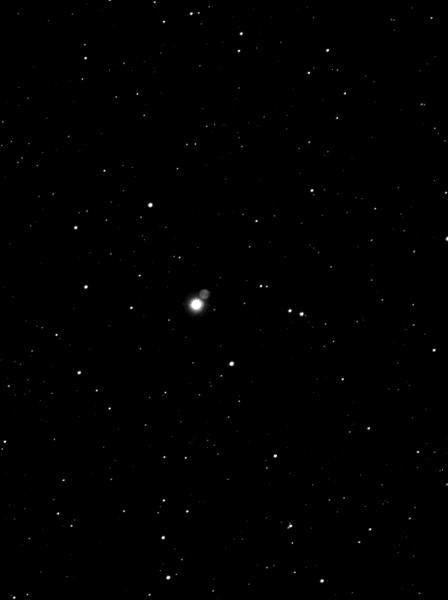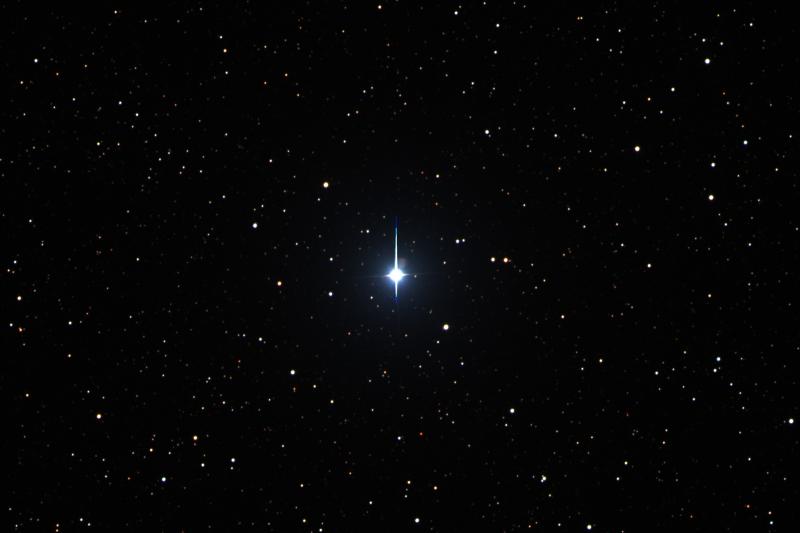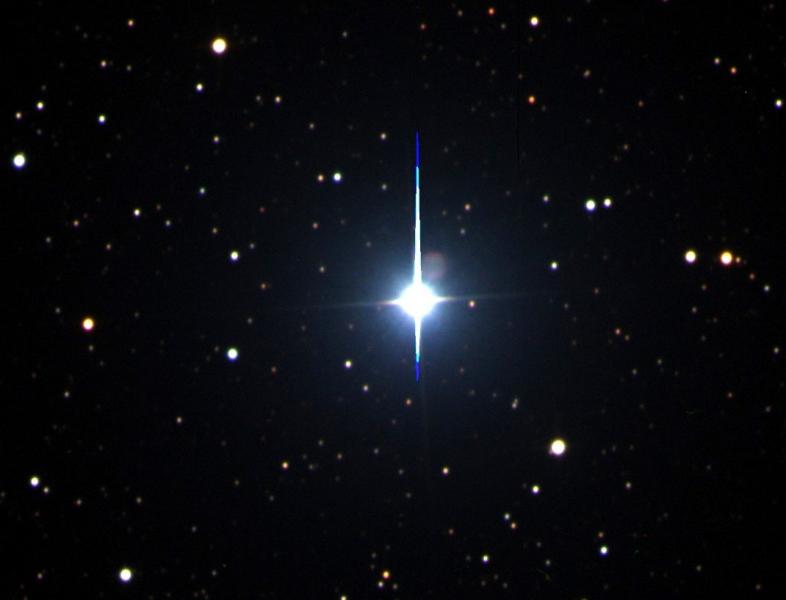2015 December 19
An elusive Christmas tree bauble
When hanging my Christmas tree baubles, I generally place them near a bright LED light for maximum effect. This plan doesn’t seem to work for the planetary nebula Abell 12. While perhaps the easiest planetary nebula to find, it is very tricky to visualise.

Abell 12 in Orion. Nick Hewitt image from 2012 TMB 115mm refractor, Starlight Xpress CCD and H-alpha filter.
The nebula is just to the northwest of Mu Orionis, the 18th brightest star in the constellation at magnitude 4.12, which just demonstrates what a rich pattern the Hunter is. Located to the northeast of Betelgeuse, it is naked-eye and so easy to find.
However, its relative brilliance can drown out the small nebula next to it. The planetary is quite small at some 37″ in diameter, and is annular, although appears a plain disc when imaged in H-alpha. The advantage of narrow band filtration is that it dampens Mu’s light and preferentially allows the nebula’s emission. But RGB shows its ring form. The central star is very faint at 19th magnitude, a challenge even for imagers.

Abell 12 to the northwest of Mu Orionis (4.12 magnitude ). Nick Hewitt image on 18th December 2015 RGB iTelescope 21 (New Mexico).

Detail of the above image showing Abell 12’s annular form.
Mu itself is an interesting multiple system comprising 4 stars. The main sequence white star has a spectroscopic companion, and there is a further much fainter pair at 18″ to complete the family.
| The British Astronomical Association supports amateur astronomers around the UK and the rest of the world. Find out more about the BAA or join us. |
